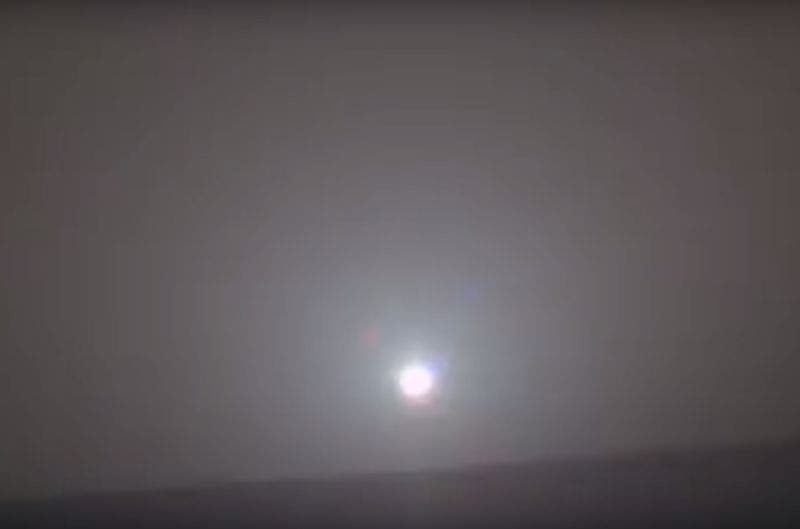NASA’s Opportunity rover has been stranded for the better part of the year in Mars’ Perseverance Valley. For months, NASA has been unable to restore communication with the rover, which had proven itself extremely resilient up until the very end. But even though Opportunity might never come back online, it still has many gifts and surprises to offer that will keep researchers busy for years to come. Most recently, a pair of creative scientists turned an image of the rover’s 5,000th sunrise on Mars into music using a special image diagnosis technique.
The technique in question, called “image sonification”, has proven itself very useful across numerous domains, from studying the characteristics of planet surfaces and atmospheres, to analyzing weather changes or detecting volcanic eruptions. In this particular case, Genevieve Williams, a lecturer at the University of Exeter, and Domenico Vicinanza, director of the Sound and Game Engineering group at Anglia Ruskin University, scanned the image of the sunrise pixel by pixel, from left to right. They then assigned pitch and melodies to certain characteristics such as terrain elevation, brightness, or color.
The end result is quite breathtaking. All starting from a regular image, the two researchers created a “Mars soundscape” that faithfully captures the aesthetics of the landscape. For instance, the dark background has been turned into slow, low-pitched harmonies while the sun’s brightness is represented by higher-pitched, brighter sounds.
The two-minute piece of music will premiere this week at NASA’s booth at the Supercomputing SC18 Conference in Dallas. At the site, the audience will be able to completely immerse themselves in the music via transducers attached to the hand, which turn sound into mechanical vibrations.
This wasn’t the first time the researchers used image sonification. Previously, Vicinanza composed music using particle data from the Higgs boson experiments and other major experiments at the Large Hadron Collider. One of the tracks was written for harp, guitar, two violins, a keyboard, a clarinet, and a flute — you can stream it right now in the player below.
As for Opportunity, the rover stopped communicating with NASA in June after it was engulfed by a massive sandstorm. The rover’s main problem is that it cannot recharge — its solar panels are dusted over, and there’s not enough sunlight. It’s remarkable, in the first place, that the rover lasted for so long, having extended its 3-month operational lifetime by 14 years. Curiosity also had to brave that same dust storm but it easily survived thanks to its nuclear reactor.










